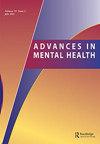Mental wellbeing and psychological distress in the UK during the COVID-19 pandemic: a comparison across time
IF 1.7
Q3 PSYCHIATRY
引用次数: 3
Abstract
ABSTRACT Objective This study aimed to assess the trajectory of wellbeing and psychological distress in a UK sample by comparing data taken from the first and second UK lockdowns. Method Wellbeing (indexed via the Warwick-Edinburgh Mental Wellbeing Scale) and psychological distress (indexed via the K10) were measured in two surveys in large online samples from Wales, UK. The first survey (n = 12,989) took place 11–16 weeks into the first UK lockdown and the second survey (n = 10,428) took place 4–11 weeks into the second UK lockdown. Results Levels of wellbeing were lower in the second survey compared to the first survey, which were already low compared to pre-pandemic data (2019). Clinically significant levels of psychological distress were found in 40.4% of participants in the second survey, representing a 9.8% increase in prevalence from the first survey. Poorer mental health was found in women, younger adults, and those from deprived areas. The greatest reduction in mental health was found in the youngest age group (16-24 years old). Discussion The COVID-19 pandemic and the measures taken to curb its spread continue to negatively impact the wellbeing of the UK population.COVID-19大流行期间英国的心理健康和心理困扰:跨时间的比较
摘要目的本研究旨在通过比较英国第一次和第二次封锁期间的数据,评估英国样本的幸福感和心理困扰的轨迹。方法对来自英国威尔士的大型在线样本进行两项调查,测量幸福感(通过沃里克-爱丁堡心理健康量表索引)和心理困扰(通过K10索引)。第一次调查(n = 12,989)在英国第一次封锁后11-16周进行,第二次调查(n = 10,428)在英国第二次封锁后4-11周进行。与第一次调查相比,第二次调查的幸福感水平较低,而与大流行前(2019年)的数据相比,第二次调查的幸福感水平已经很低。在第二次调查中,40.4%的参与者存在临床显著程度的心理困扰,比第一次调查的患病率增加了9.8%。女性、年轻人和贫困地区的人心理健康状况较差。最年轻年龄组(16-24岁)的心理健康状况下降幅度最大。2019冠状病毒病大流行以及为遏制其传播所采取的措施继续对英国人民的福祉产生负面影响。
本文章由计算机程序翻译,如有差异,请以英文原文为准。
求助全文
约1分钟内获得全文
求助全文

 求助内容:
求助内容: 应助结果提醒方式:
应助结果提醒方式:


